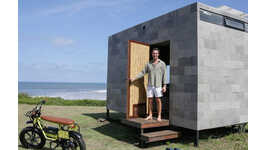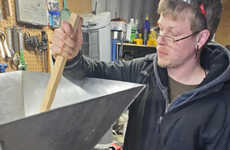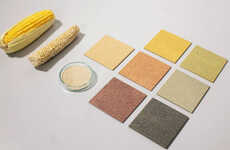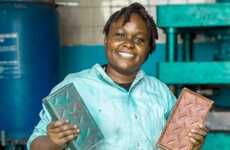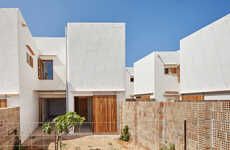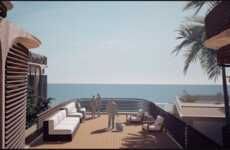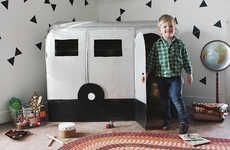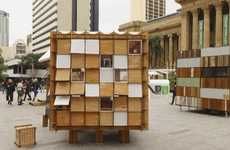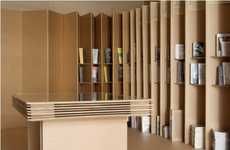
Composite Panels from Loofah and Corn Husks
Marissa Brassfield — December 4, 2008 — Eco
References: rolexawards & springwise
Elsa Zaldívar originally set out to create a viable housing solution for the impoverished in rural Paraguay, but her recyclable housing composite panels made from loofah, corn husks and caranday palm trees is an eco-friendly option for homes worldwide.
Elsa Zaldívar is a social activist who has improved the lives of the inhabitants of Caaguazú, a small region plagued by the effects of severe deforestation. Even before she invented recyclable homes, Zaldívar helped the local women construct toilets and build stoves. Zaldívar also inspired the women to grow loofah and creating loofah sponges, mats, slippers, and insoles to generate income.
In this loofah cooperative, there was inevitably product grown that could not be sold. Elsa Zaldívar took on this opportunity to improve the lives of the people in Caaguazú once more and create an option for recyclable homes.
The finished loofah panels are made from recycled plastic and vegetable fibers. They cost about $3 per square meter to produce and do not generate any waste. Zaldívar says that when the recyclable home panels do wear out or break, they can be ground up and formed into another panel.
Elsa Zaldívar is a social activist who has improved the lives of the inhabitants of Caaguazú, a small region plagued by the effects of severe deforestation. Even before she invented recyclable homes, Zaldívar helped the local women construct toilets and build stoves. Zaldívar also inspired the women to grow loofah and creating loofah sponges, mats, slippers, and insoles to generate income.
In this loofah cooperative, there was inevitably product grown that could not be sold. Elsa Zaldívar took on this opportunity to improve the lives of the people in Caaguazú once more and create an option for recyclable homes.
The finished loofah panels are made from recycled plastic and vegetable fibers. They cost about $3 per square meter to produce and do not generate any waste. Zaldívar says that when the recyclable home panels do wear out or break, they can be ground up and formed into another panel.
Trend Themes
1. Recyclable Building Materials - Elsa Zaldívar's unique approach to using loofah and corn husks in building composite panels presents an opportunity for manufacturers to explore alternative, sustainable building materials.
2. Eco-friendly Housing Solutions - Zaldívar's invention of recyclable housing composite panels provides a disruptive innovation opportunity for the housing and construction industry to offer more environmentally friendly products.
3. Community-based Production - The success of the loofah cooperative model presents an opportunity to explore community-based production of affordable and sustainable building materials, giving rise to local entrepreneurship initiatives.
Industry Implications
1. Construction Materials - There is a potential for construction materials industry to capitalize on the use of new raw materials like loofah and corn husks to manufacture innovative and eco-friendly composite building materials.
2. Sustainable Housing - Housing providers could explore Zaldívar's recyclable housing composite panels that offer durability and affordability while being an eco-friendly alternative to the traditional materials such as concrete and steel.
3. Social Entrepreneurship - This model unlocks opportunities for social entrepreneurship to create community-based initiatives that could generate economic growth and support for local communities through sustainable production and usage of recyclable building materials.
5
Score
Popularity
Activity
Freshness


